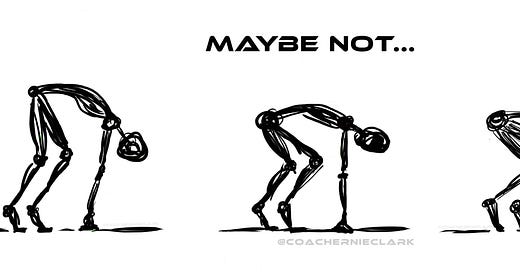Over the years, I’ve heard the endless debate on block starts/positions. Whether it be high school coaches at a meet, award-winning coaches at the convention, or some guy on Twitter, the conversation pops up like a weed, and every time we take it out, it grows right back. They talk about sprint and hurdle starts like the two involve totally different skills. In my humble opinion, the two are nearly identical1.
Slight changes begin when hurdlers sneak up to the elite level (I mean NCAA All-Americans to World Champions) and/or athletes become seven steppers2 .
Lock in on perfecting the fundamentals.
What is a “Hurdle Start”?
Some call it a “bunch” or “crunch” start. The theory is to put an athlete’s feet closer to the start line so they can be tall earlier for the first hurdle and/or get to the first hurdle faster. But does it really work?
Bunched starts make athletes slower because their body positions are too crowded to move explosively and efficiently.
I’m going to try and keep it simple. Multiple issues can surface when an athlete's feet are too close to the start line. The first is a bunched/crunched start doesn’t allow athletes to rise to a proper set position in the blocks. The second is when shin angles become perpendicular to the ground the athlete’s body pops up ⬆️ instead of forward ➡️.




